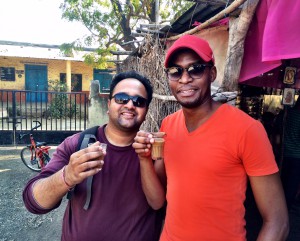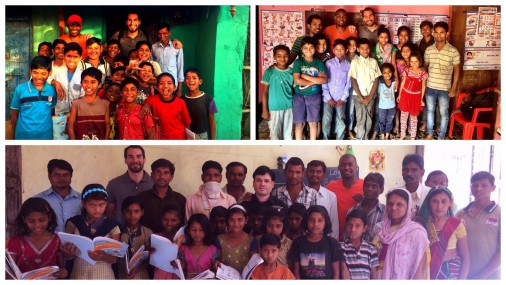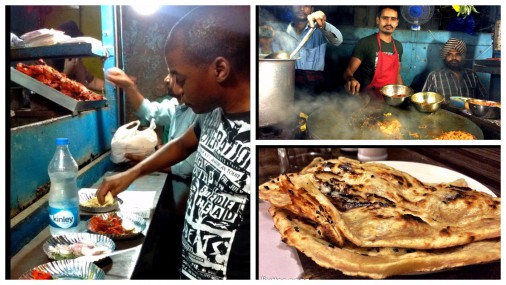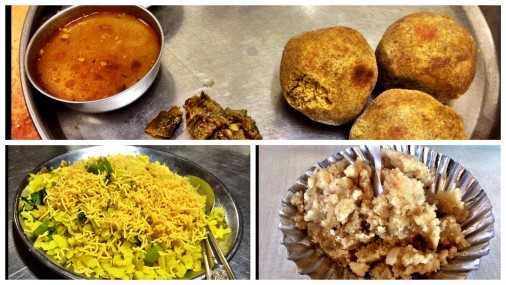The Mission
This is the first blog I have ever written in my life, I hope you enjoy it. Sometimes I admire professional authors for coming up with hundreds and hundreds of pages in bestseller novels, because truly speaking writing is difficult…well at least for me. So, instead of trying to be all professional, I am just going to write you a story.
I have been in Bombay (Mumbai) for two full weeks now. I am here to learn and contribute, in making this world a better place, thanks to a wonderful Responsible Leaders Fellowship (RLF) programme offered by my management school, ESMT. My late president, Pres. Nelson Mandela once said, “education is the most powerful weapon you can use to change the world.” As such I am happy to be associated with a management school that is making change.
I am here with my classmate and friend, Sylvain Huck. We are both in Mumbai for two months to work with an organization called LeapForWord (LFW), before moving on to the next mission in Pune. LeapForWord’s mission is simple, they want to extend the English language to the rural kids of India, in the simplest and most effective manner. Having been here only for two weeks, I really do understand the need for English, both professionally and otherwise. Most people on the streets do not speak English, and thus are limiting their opportunities on getting employed in big international companies.
LFW developed a technique and method that is so simple that ANY person can be given training for less than a week and if they are successful, they are given an opportunity to teach kids English even without any prior knowledge of English. This is the model they call the “teacher entrepreneur” model. How it works is that they train anyone who is keen and dedicated to teaching kids. These “teachers” currently get trained for free, they only buy books and teaching material from LFW (books and training material were developed from scratch by LFW). When qualified they have an opportunity to go and look for “business” i.e. admit kids in villages. Parents pay the teachers directly (usually 100 Rupees a month, which is approximately ¬1,32) and LFW does not take any cut from this. I really liked this model as it does not only offer kids an opportunity to learn English but also offers the opportunity to rural unemployed “teacher entrepreneurs” to make a living out of teaching.
Sylvain and I basically have three deliverables:
- Prepare a marketing strategy and business plan for LFW that they are going to use in scaling up their services in rural Maharashtra.
- Prepare a business model and business plan for the LFW spelling bee championship.
- Prepare a finance pitch presentation and help LFW pitch on the 19th of March, in front of Indian CEOs and businesses’ CSR management.

I’ll be honest, when Pranil (LFW CEO) told me of these deliverables, the first thing that ran into my mind was, “Am I here to do MBA 2015 module 7?” It certainly feels like I’m a student again, the only difference is that this assignment is not graded, and nor is it a case study. This is the real deal, the real makoya. Our grade will be the impact we leave on LFW and hopefully, if they implement our recommendations they can succeed in their mission.
To make us better understand their mission, we visited one of the schools where they implement the “teacher entrepreneur” model. We took an overnight bus ride from Mumbai to Shirpur (380km apart). This was an interesting ride for me as I had never been on a sleeper bus before. I probably could have slept if it wasn’t for the crazy driving in India. After two weeks here, I still haven’t got used to it…kind of makes you feel uneasy 🙂 During our visit to Shirpur, we met all teacher entrepreneurs with their students and in some cases, we met the kid’s parents too. Everyone was excited to see us, we conducted interviews with both the kids and parents to see if they liked the LFW idea and if it made a difference in general. It was impressive to learn how highly kids speak of LFW classes, and they certainly excel in English at school. Some kids can read three or four letter words in English before they could do the same in their native Marathi. It was encouraging to see that most kids embraced English as an important language in their lives, with most kids citing job opportunities and a better lifestyle as their main drivers for learning English.

The City
Bombay or Mumbai is the capital of the Indian state of Maharashtra. It is also India’s financial capital. Bombay has a population of 22 million people (half the population of my native South Africa). One thing that is nice about Mumbai is that for such a big city, it is very cheap and convenient to move around. Black and yellow Rickshaws and taxis, buses, the busy Western and Central railways, and Uber are my main methods of moving around the city. I would often use a rickshaw to get to the nearest train station, then use the Western railway when I want to get up and down Mumbai (i.e. North to South). We only use Uber when it is convenient at night e.g. when coming back from work late. Although the city is next to the sea and there are lots of rivers throughout Mumbai, there is a lot of water pollution, and as such drinking water is not so clean if you are not used to it. Locals drink tap water without any problems, I prefer to just buy purified water. Buying clean water is cheap. We easily get 20 liters of clean purified water delivered to our apartment for less than 1 Euro. Mumbai road infrastructure is pretty solid and in a good state, although it is hardly free. Traffic is a nightmare here, if you don’t plan your trip accordingly, you will get stuck. I am using google traffic a lot before I get moving, just to see how long will I be stuck.
The Foodie
I generally love Indian food. In my home country, South Africa, we generally have fairly good Indian restaurants. I was so disappointed with Indian restaurants in Berlin. I think I tried two and I gave up. So you can imagine how excited I am to be here, and experience the real deal…the spicy Indian food, the masala India. So I told myself I’d give myself a couple of weeks to get used to everything before heading for street food. It didn’t last that long though. Everything here is so inviting and you get it at every corner of the street. From all-day chai tea to sugar cane juice, to sweet lassis, street omelets, and more; we try it all when we can. And no, I haven’t been sick because of it. I think in general if you are not used to spicy food, you will get sick in India. Not because of the food, but just because your body system doesn’t accept the masala pleasure. I can safely say, Indian food is safe, and it has to be since it is all cooked and mostly fried.
In my two weeks here, I have been converted into being a half vegetarian. Every lunch meal we have is vegetarian and I have not even once complained. One thing is for sure, Indians do know how to make vegetable food look and taste sexy. I wouldn’t mind being vegetarian here, the masala gels so well with potatoes, dhal, peas, eggs — name it, they will make it sexy. Here is a snippet of what we have been trying so far:


It is without a doubt that the next couple of months are going to be interesting, and I am looking forward to it. Please engage with me, I would appreciate some suggestions, myths to be busted and any interesting Indian cuisine to try.
Till next time, namaste 🙂
M.A.D.

Sounds awesome, enjoy the experience and take lots of pictures!
At least, I must say that the food looks really tasty and also determines tastes good .
Awesome read. Makes me nostalgic reading about Mumbai. Have a great time guys and all the best. Looking forward to hearing your experiences from Pune
Andile, with the drive and energy you and Sylvain bring to the initiative, I am confident that you will make a positive difference to LFW. I wish you both all the opportunities to put to use all that you’ve learnt during our MBA. LFW will benefit from both of yours’ perspectives. I look forward to hearing more from you guys as your work progresses.
If you’ve not already done these:
1. Try a motorbike ride, it’ll be an experience you’ll cherish for a long time. If the Mumbai traffic scares you, see if you can manage one early in the morning by the beach side.
2. Visit Haji Ali to experience first-hand what religious harmony looks like.
3. Enjoy a dry fruit faluda (a tad expensive though) at Haji Ali Juice Centre.
4. Go for a morning run on the marine drive, go for an evening stroll on one of the beaches.
5. Order food from a place and have it delivered to you by dabbawalas (Harvard studied their business model 🙂 )
6. Be sure to taste wada-pav, pav-bhaji and pani puri on a thela (small street-side eatery on wheels)
Enjoy the experience and stay safe!
Now don’t ever ask me how I manage to live being a vegetarian 😉 All the best to you and Sylvain on your adventure. Proud of you guys!!
So proud of all the RLFs in 2015 batch! I am really honored to have worked with these responsible leaders. Take care Mr M.A.D, and Sylvain, see you soon my friend :).